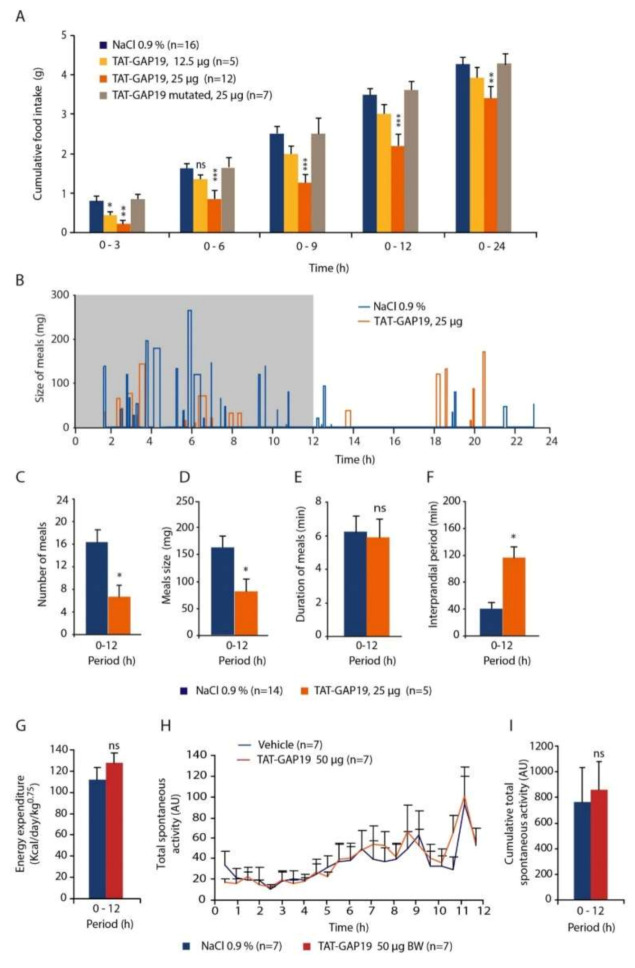Figure 6.
(A): Cumulative food intake (g), measured over a 24 h period, of mice having received an i.c.v. injection of either vehicle (Sodium Chloride (NaCl) 0.9%) or TAT-GAP19 (12.5 or 25 µg). The TAT-GAP19-I14A, which includes a point mutation making it ineffective on connexin 43 hemichannels (Cx43 HCs) activity was tested on food intake at the dose of 25 µg. (B): Graph showing meal size over 24 h after i.c.v. injection of vehicle or TAT-GAP19 25 µg. Note that each bar represents a meal and its width the meal duration. The dark period is represented by the shaded box. (C–F): Meal microstructure analysis performed during the dark period for mice that received either vehicle or TAT-GAP19 25 µg allowed quantification of meals number (C), meals size (in mg of food, (D)), meal duration (in min, (E)) and interprandial period (in min, average intervals between meals, (F–G)): Measure of energy expenditure (in Kcal/day-1/kg0.75) within 12 h after injection of 0.9% NaCl vehicle (n = 7) or 50 µg TAT-GAP19 (n = 7). (H,I): Measure of total spontaneous activity (in Arbitrary Unit, UA; (H) and cumulative spontaneous activity (I) within 12 h for the 2 groups. ns: no significant difference; * p < 0.05, ** p < 0.01 and *** p < 0.001, significantly different from NaCl-treated mice.

